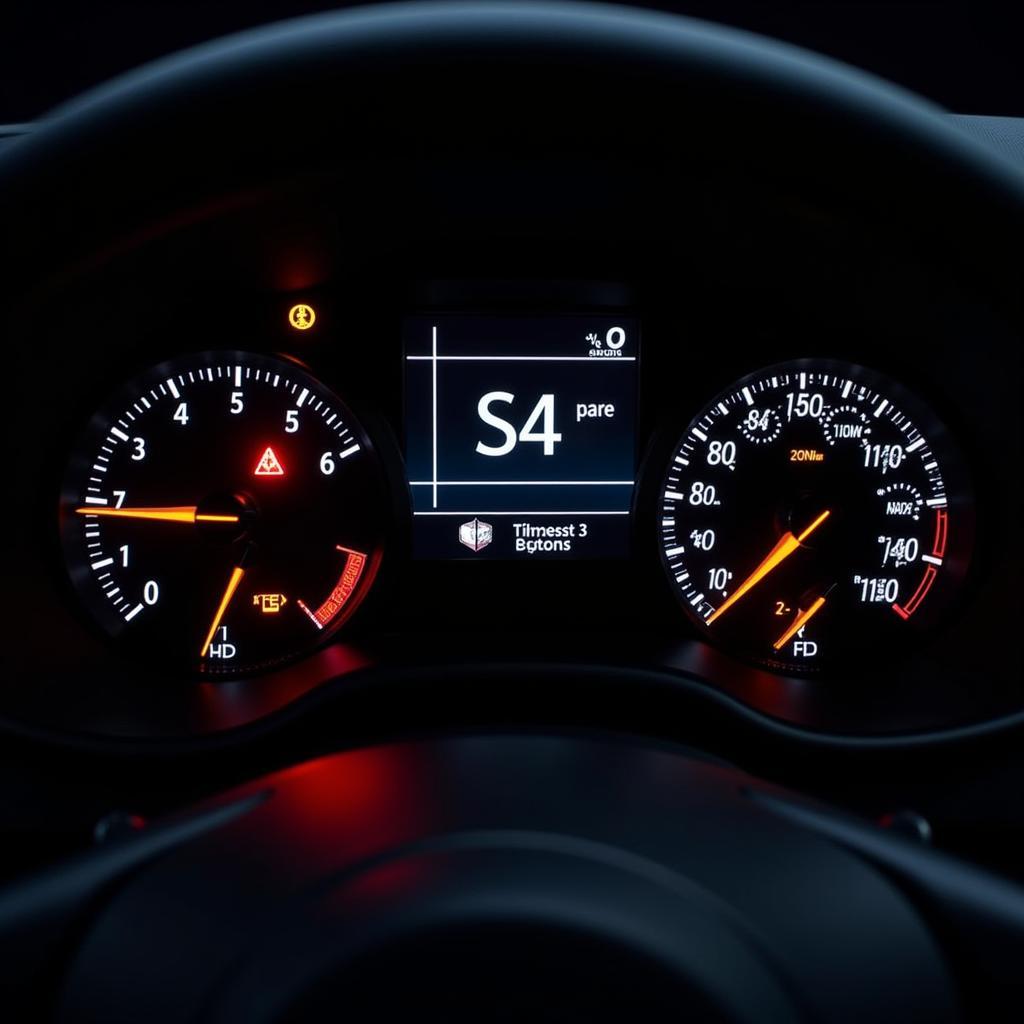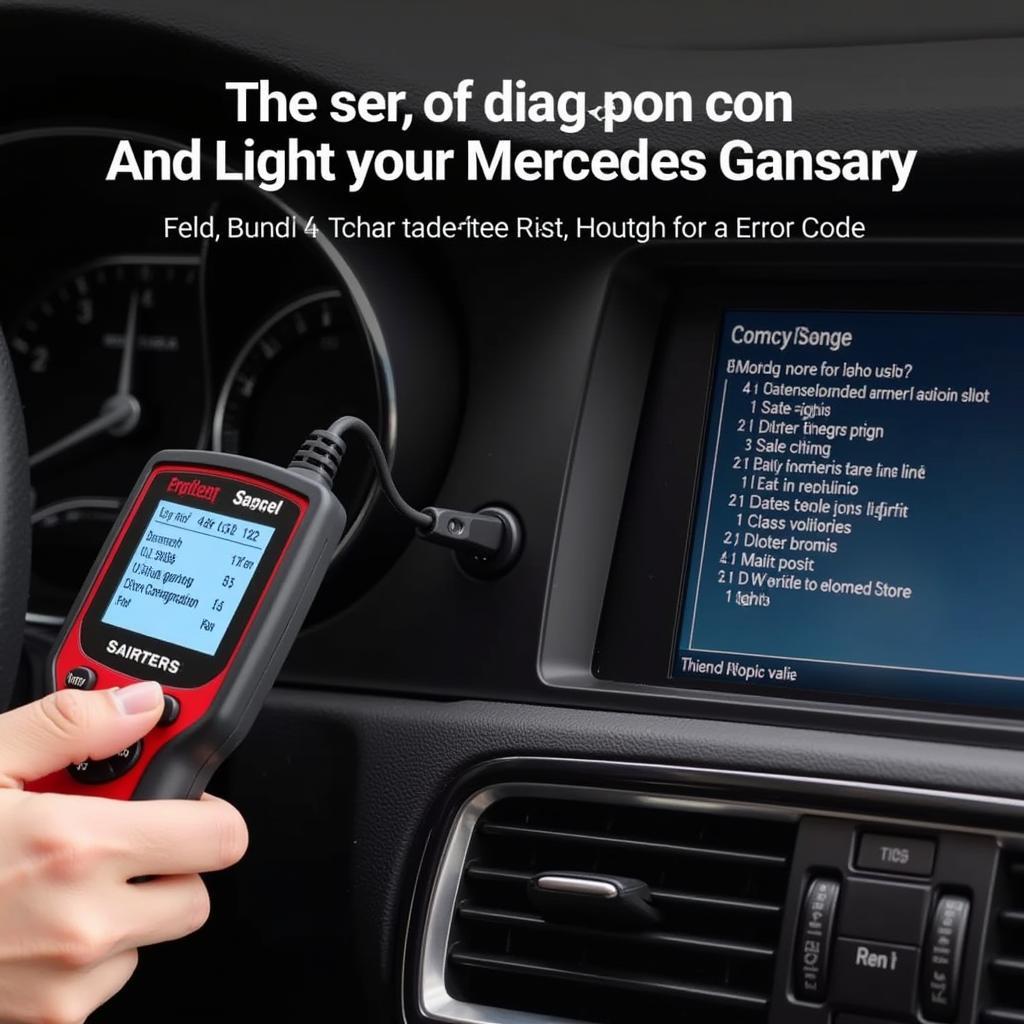Limp mode in a Mercedes-Benz can be a frustrating experience. This article will guide you through the common causes, diagnostics, and solutions for fixing limp mode in your Mercedes, empowering you to get back on the road safely. We’ll cover everything from simple DIY fixes to more complex issues requiring professional assistance.
 Mercedes Limp Mode Dashboard Warning Lights
Mercedes Limp Mode Dashboard Warning Lights
Understanding what limp mode is, why it happens, and how to address it is crucial for any Mercedes owner. Let’s dive into the details. What is limp mode? It’s a safety feature designed to protect your car from further damage when a serious problem is detected. This protective measure limits the engine’s performance, restricting speed and RPM to get you to a safe location. Experiencing limp mode can be concerning, but understanding how to troubleshoot it can save you time and money. If you’re facing issues with fixed price servicing, explore our guide on mercedes fixed price servicing cost.
What Causes Limp Mode in a Mercedes?
Several issues can trigger limp mode in your Mercedes. These range from simple sensor malfunctions to more complex problems with the transmission or engine. Here are some of the most common culprits:
- Transmission Problems: Issues with the transmission control unit, valve body, or solenoids can trigger limp mode.
- Engine Problems: A malfunctioning mass airflow sensor, oxygen sensor, or other critical engine components can cause the car to enter limp mode.
- Turbocharger Issues: Problems with the turbocharger or its associated components, such as wastegate or boost pressure sensors, can activate limp mode.
- Sensor Malfunctions: Faulty sensors, like the crankshaft position sensor or camshaft position sensor, can disrupt engine operation and trigger limp mode.
- Electrical Issues: Wiring problems, short circuits, or a failing battery can cause the car’s computer to enter a protective state, resulting in limp mode.
 Mercedes OBD2 Scanner Diagnostic Process
Mercedes OBD2 Scanner Diagnostic Process
How to Diagnose Limp Mode in a Mercedes
Diagnosing the root cause of limp mode involves reading the error codes stored in the car’s computer. You’ll need an OBD2 scanner for this. Here’s a step-by-step guide:
- Connect the OBD2 Scanner: Plug the scanner into the OBD2 port, typically located under the dashboard on the driver’s side.
- Turn on the Ignition: Turn the key to the “on” position without starting the engine.
- Read the Codes: The scanner will display any stored error codes. Note down these codes as they are crucial for identifying the problem.
Understanding these codes is paramount. They provide specific insights into the issue triggering the limp mode.
 Mechanic Inspecting Mercedes Engine Bay
Mechanic Inspecting Mercedes Engine Bay
How to Fix Limp Mode Mercedes: Common Solutions
Once you have identified the error codes, you can begin troubleshooting the problem. Some common solutions include:
- Checking Fluid Levels: Ensure that essential fluids like engine oil, coolant, and transmission fluid are at the correct levels.
- Replacing Faulty Sensors: If a specific sensor is identified as the culprit, replacing it is often a straightforward fix.
- Addressing Turbocharger Issues: If the turbocharger is the problem, it might require repairs or replacement.
- Repairing Wiring or Electrical Problems: Fix any damaged wiring or address electrical issues that might be causing the limp mode.
- Resetting the ECU: In some cases, resetting the engine control unit (ECU) can resolve the limp mode issue.
While some of these fixes can be DIY projects, others might require the expertise of a qualified Mercedes technician. For further insights on Mercedes servicing costs, refer to Is Mercedes fixed price servicing worth it.
Conclusion
Limp mode in a Mercedes is a safety feature, not necessarily a catastrophic failure. By understanding how to diagnose and troubleshoot the underlying cause, you can often resolve the issue and get your car back to its optimal performance. While some fixes are straightforward, others require professional assistance. Remember to always consult a qualified technician for complex issues or if you’re unsure about performing any repairs yourself. Don’t let limp mode keep you off the road. For specific servicing options, check Mercedes fixed price servicing uk.
FAQ
- What does limp mode feel like in a Mercedes? The car will have reduced power, limited speed, and might shift harshly.
- Is it safe to drive a Mercedes in limp mode? It’s designed to get you to a safe location, but prolonged driving in limp mode is not recommended.
- Can I reset limp mode myself? In some cases, yes, by addressing the underlying issue or resetting the ECU.
- How much does it cost to fix limp mode in a Mercedes? The cost varies depending on the cause and the necessary repairs.
- How can I prevent limp mode in my Mercedes? Regular maintenance and addressing any warning lights promptly can help prevent limp mode.
- What if limp mode returns after I’ve fixed it? The initial fix may not have addressed the root cause, requiring further diagnosis.
- Where can I find more information about Mercedes fixed price servicing? Check out Sytner Mercedes fixed price servicing.
Common Situations and Questions
Scenario 1: Limp mode activates after hard acceleration. This could indicate a turbocharger issue or a problem with the fuel system.
Scenario 2: Limp mode occurs intermittently. This suggests a loose connection, a failing sensor, or an intermittent electrical problem.
Further Assistance
For other related information, consider exploring our articles on Lookers mercedes fixed price servicing.
Contact Us
Need help fixing your Mercedes limp mode? Contact us via Whatsapp: +1 (641) 206-8880, Email: [email protected] or visit us at 276 Reock St, City of Orange, NJ 07050, United States. We offer 24/7 customer support.



